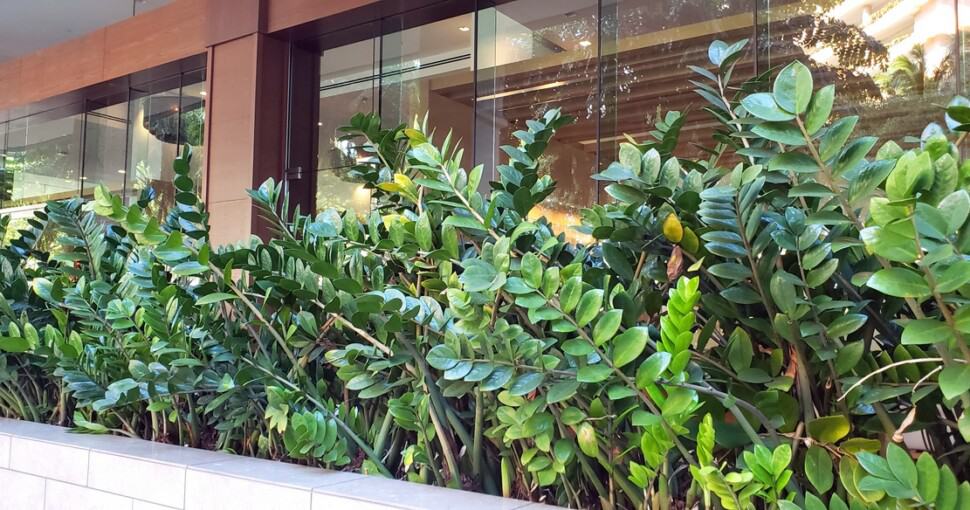Zamioculcas zamiifolia forms part of the Zamioculcas genus. Other names for Zamioculcas zamiifolia include ZZ plant, Zuzu plant, and Zanzibar gem. These flowering plants are a part of the Araceae family and are native to eastern Africa, Kenya, and the northeastern region of South Africa. Their roots are rhizomatous and store moisture, making them drought-resistant.
Contents
Many plants look like ZZ plants but have their own distinct “personalities” and features. These plants include:
- Hawaiin Love Plant – resembles ZZ plants through their long, green, oval-shaped leaves.
- Jack-in-the-pulpit – closely resembles ZZ plants when they are still young, thanks to their long green leaves and growth pattern.
- Cuckoo-pint – resembles a short, fat, lazy ZZ plant.
- Angel Wings – resemble larger ZZ plants thanks to their almost elephant ear-like shape when fully mature.
- Calla Lilies – resemble ZZ plants before their pure white flowers come in when they only have long, bright green foliage.
- Dumb Cane – has long, oval-shaped green leaves resembling some ZZ plant variants.
- Pothos – have long, draping, green leaves almost identical to some ZZ plants.
Now that we have seen a brief overview of each plant that resembles ZZ plants, let’s look at these 7 plants more closely.
1. Hawaiin Love Plant (Anthurium)
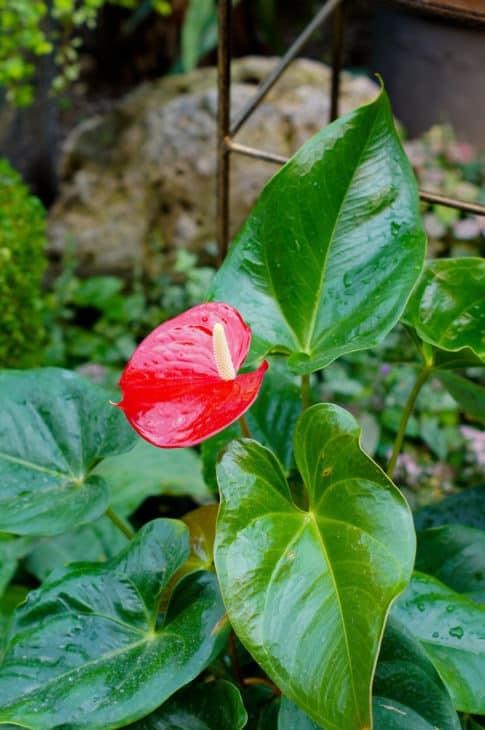
Hawaiin Love Plant (Anthurium) has around 1,000 cousins in the Anthurium genus. The Hawaiin Love Plant is native to Central America, northern South America, and parts of the Caribbean. These plants resemble ZZ plants through their long, green, oval-shaped leaves.
Hawaiin Love Plants are the perfect indoor house plant because they continuously bloom year-round. They breathe life into any room they are placed in and stay vibrant, provided their warm and humid climate remains consistent.
Hawaiin Love Plants have an average lifespan of roughly five years and require frequent attention to keep healthy. They need to be planted in well-drained soil and kept in partial sunlight. It is important to keep Hawaiin Love Plants outside the reach of children and animals as they are known to be toxic.
2. Jack-in-the-pulpit (Arisaema Triphyllum)
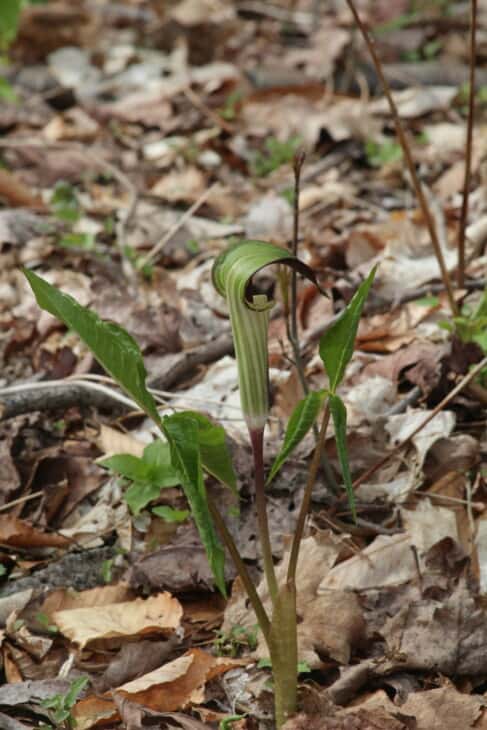
Jack-in-the-pulpit (Arisaema Triphyllum) can be found natively in eastern parts of the United States and closely resembles ZZ plants when they are still young. Once their hooded spathe sprouts, it takes on its own character. Jack-in-the-pulpit’s flower has an inner spadix where its flower resides and an outer leaf structure that forms “the pulpit.”
Jack-in-the-pulpit grows 2 feet tall and prefers partial sunlight to full shade, making them ideal for homeowners with limited garden space. They bloom between April and May and should be planted in moist, humusy soil that is naturally acidic.
Jack-in-the-pulpit is toxic to pets and people and should be kept out of arms reach when guests visit. The last thing anyone wants is a trip to the emergency room because of a house plant. Aspiring owners take head when considering whether to purchase a Jack-in-the-pulpit.
3. Cuckoo-pint (Arisarum Maculatum)
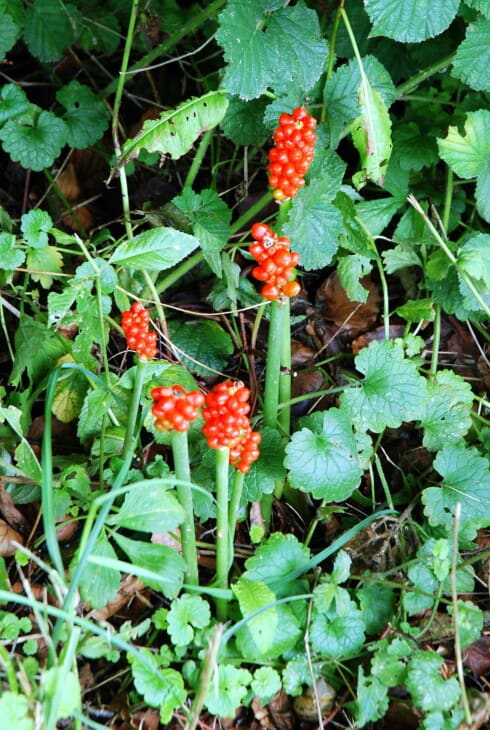
Cuckoo-pint (Arisarum Maculatum) is a shade-loving herbaceous that resembles a short, fat, lazy ZZ plant. The Cuckoo-pint plant has deep roots and can become difficult to remove once they get going. This plant is native to Europe and some parts of western Turkey and is mainly found in forests near rivers and streams.
Cuckoo-pint grows well in moist, well-drained soil and can mature to 18 inches tall. They mostly grow in the shade but can tolerate short bouts of direct sunlight. Their leaves are glossy and shaped like arrows and look dark green with purple blotches.
Cuckoo-pint is extremely poisonous and has been known to cause skin irritation and illness in humans and animals. Their fruit, on the other hand, is completely harmless to birds. Cuckoo-pint isn’t a plant you want to keep in your home and should be left in the jungle where it can’t hurt anyone.
4. Angel Wings (Caladium)
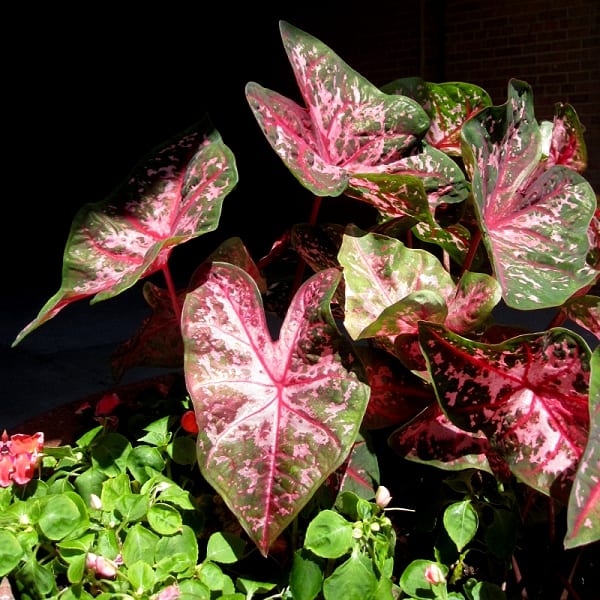
Angel Wings (Caladium) is a tropical plant that has multicolored foliage. Their leaves come in various colors, including white, green, pink, and red. They most resemble larger ZZ plants thanks to their almost elephant ear-like shape when fully mature.
Angel Wings are easy to plant and take well in early spring. Angel Wings should be planted in well-drained soil in pots about 6 inches deep and 6 inches wide. Keeping your Angel Wings in a warm room with lots of sunlight will keep them happy through the cold winter months.
Angel Wings are relatively low maintenance once their roots have been established, only requiring some moisture and fertilizer to help them produce tubers for the next growing season. Watering them on a regular basis will keep your home looking like a wonderland, brimming with color.
5. Calla Lilies (Zantedeschia)
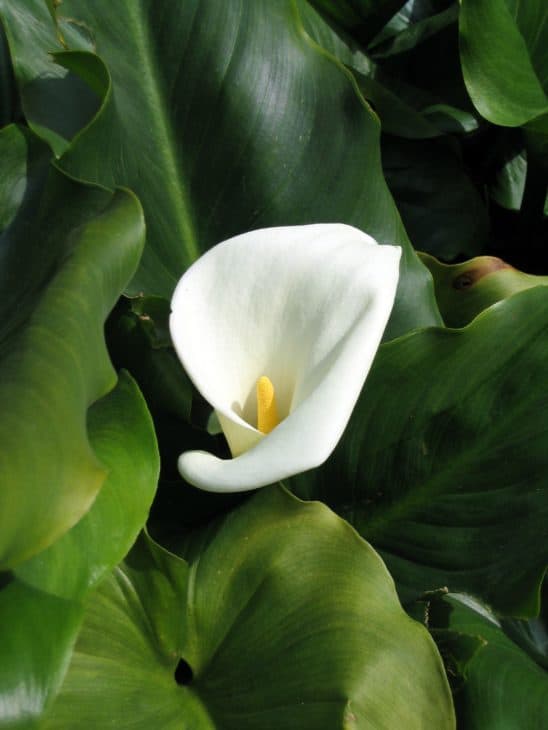
Calla Lilies (Zantedeschia) bloom for several weeks at a time and make for excellent border plants or room decorations when kept in pots. Calla Lilies most resemble ZZ plants before their pure white flowers come in. Calla Lilies have been described by many as elegant, graceful, and exotic.
Calla Lilies grow 36 inches tall, and 24 inches wide and are surprisingly easy to grow, provided they are planted in partial shade in well-drained soil. Calla Lilies thrive in tropical climates with temperatures ranging between 60 – 80 degrees Fahrenheit.
Calla Lilies are sometimes prone to bacterial diseases, gray mold, and pests like slugs, aphids, and spider mites. Taking care of Calla Lilies isn’t particularly difficult. It just takes time and patience when dealing with such a delicate plant.
Related: When Are Calla Lilies In Season? | Are Calla Lilies Poisonous?
6. Dumb Cane (Dieffenbachia)
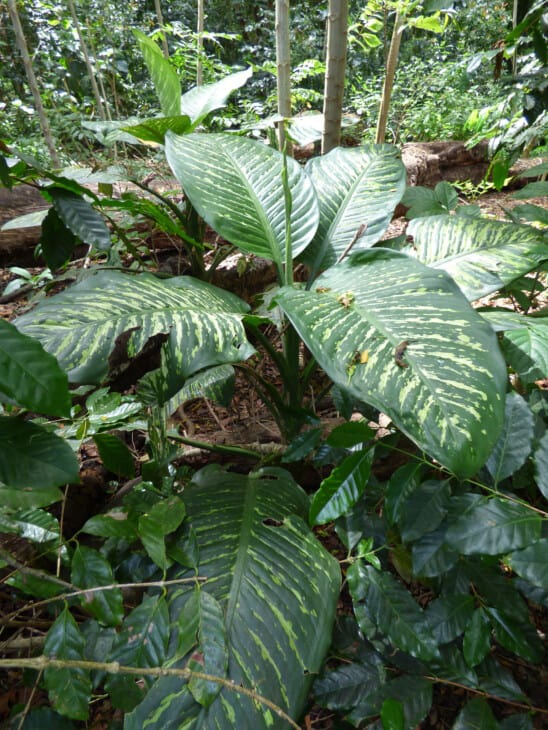
Dumb Cane (Dieffenbachia) is an easy-to-grow houseplant that looks like a ZZ plant for those unfamiliar with its intricate details. Their long oval-shaped green leaves are perfectly accentuated with long streaks of white inlay, making them an elegant choice for a modern home with a “clean” aesthetic.
Dumb Cane can grow 10 feet tall and 3 feet wide and prefers partial sunlight and well-drained soil that is naturally acidic. Dumb Cane blooms in late spring and early summer. Being native to the Caribbean and South America, Dumb Cane does well in a tropical environment full of moisture.
Dumb Cane is known to be toxic to people and animals and should be placed accordingly to avoid unnecessary contact. Ensuring you don’t overwater your Dumb Cane will keep your plant happy and thriving for many years to come.
Related: 8 Plants similar to Dieffenbachia (Dumb Cane)
7. Pothos (Epipremnum Aureum)
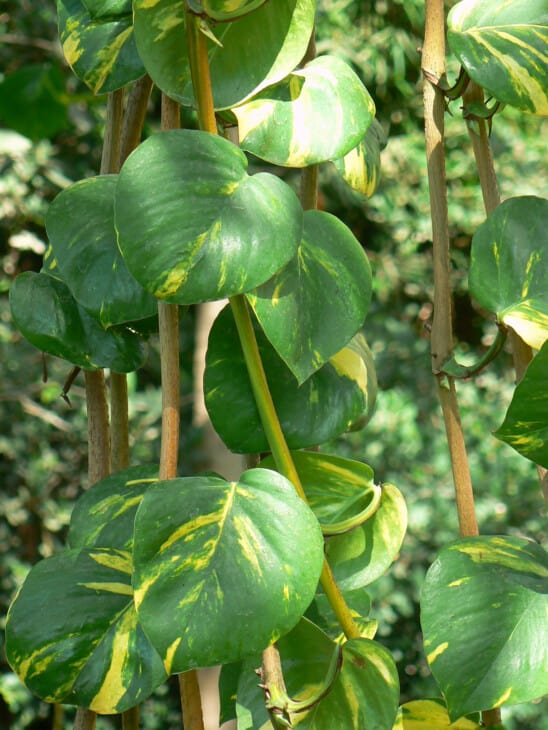
Pothos (Epipremnum Aureum), otherwise known as Devil’s Ivy, is a fantastic houseplant for new botanists and experienced plant owners alike. Their long, draping, green leaves are almost identical to some ZZ plants. The difference lies in the details. Their bright green oval leaves have splashes of light green to deepen the Pothos’ character.
Related: 8 Plants That Look Like Pothos / Devil’s Ivy (but are not)
Pothos are simple plants. They tolerate various light intensity levels but prefer to be placed in direct sunlight. They require a lot of water during the spring and summer seasons but can be left fairly unattended during the colder winter months. They can grow to be almost 66 feet when planted outside in the garden, so take care to prune them when they start to overwhelm your room.
Pothos isn’t poisonous to the touch but can be harmful if the sap inside its stems is ingested, so if you have pets, take care to monitor them when they are around your Pothos and ensure they don’t chew on it, as this could result in an upset stomach, sore lips and a bruised tongue.
Avoid over-watering your Pothos, as this could lead to root rot. Pothos needs to be planted in well-drained soil and only watered when needed. Pothos also doesn’t cope well in extremely cold temperatures and requires a heat lamp or two if winter is particularly cold.

